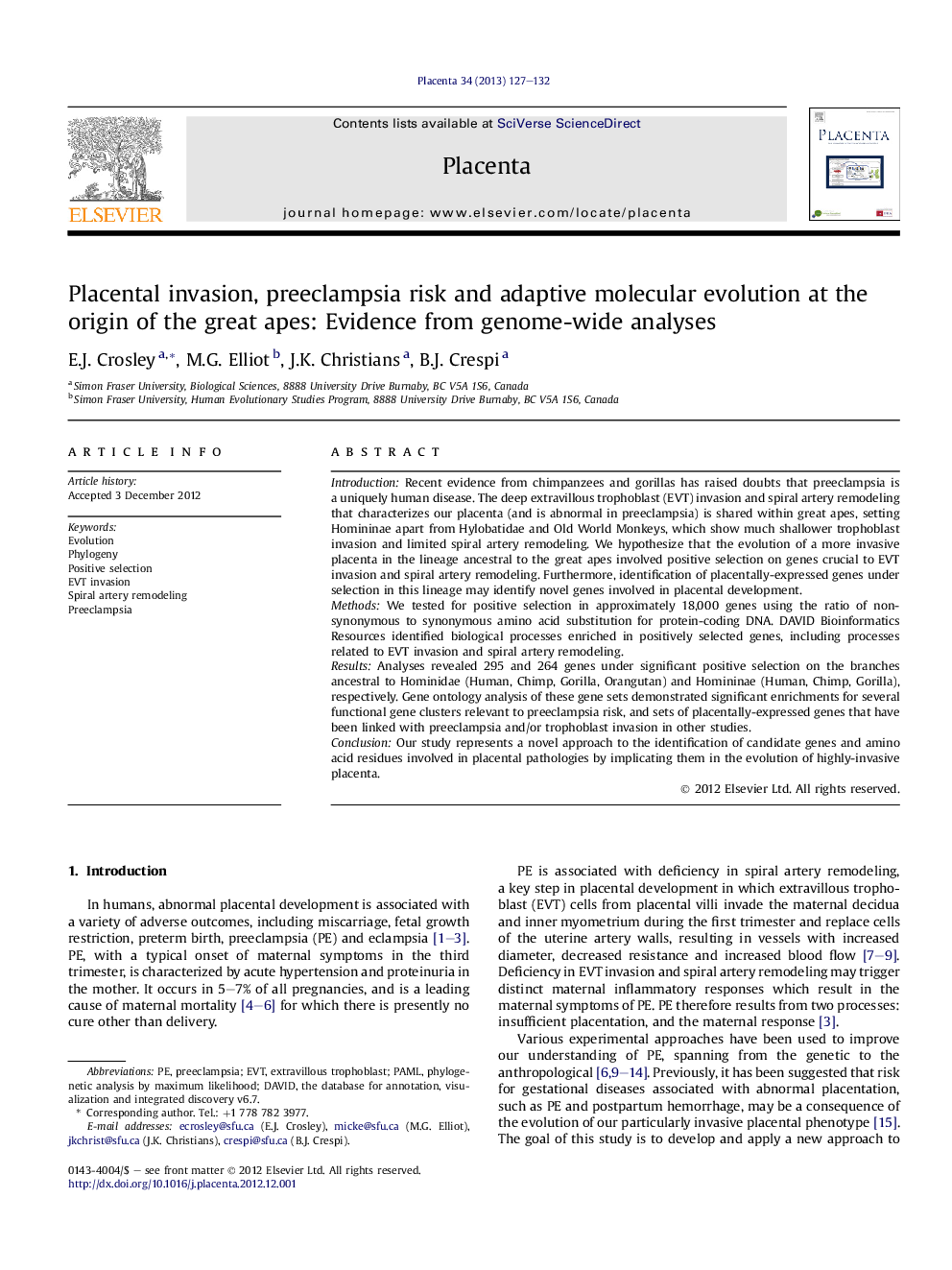| کد مقاله | کد نشریه | سال انتشار | مقاله انگلیسی | نسخه تمام متن |
|---|---|---|---|---|
| 5895630 | 1154475 | 2013 | 6 صفحه PDF | دانلود رایگان |
IntroductionRecent evidence from chimpanzees and gorillas has raised doubts that preeclampsia is a uniquely human disease. The deep extravillous trophoblast (EVT) invasion and spiral artery remodeling that characterizes our placenta (and is abnormal in preeclampsia) is shared within great apes, setting Homininae apart from Hylobatidae and Old World Monkeys, which show much shallower trophoblast invasion and limited spiral artery remodeling. We hypothesize that the evolution of a more invasive placenta in the lineage ancestral to the great apes involved positive selection on genes crucial to EVT invasion and spiral artery remodeling. Furthermore, identification of placentally-expressed genes under selection in this lineage may identify novel genes involved in placental development.MethodsWe tested for positive selection in approximately 18,000 genes using the ratio of non-synonymous to synonymous amino acid substitution for protein-coding DNA. DAVID Bioinformatics Resources identified biological processes enriched in positively selected genes, including processes related to EVT invasion and spiral artery remodeling.ResultsAnalyses revealed 295 and 264 genes under significant positive selection on the branches ancestral to Hominidae (Human, Chimp, Gorilla, Orangutan) and Homininae (Human, Chimp, Gorilla), respectively. Gene ontology analysis of these gene sets demonstrated significant enrichments for several functional gene clusters relevant to preeclampsia risk, and sets of placentally-expressed genes that have been linked with preeclampsia and/or trophoblast invasion in other studies.ConclusionOur study represents a novel approach to the identification of candidate genes and amino acid residues involved in placental pathologies by implicating them in the evolution of highly-invasive placenta.
Journal: Placenta - Volume 34, Issue 2, February 2013, Pages 127-132
